-
Posts
7,882 -
Joined
-
Last visited
Content Type
Profiles
Forums
Articles
Posts posted by kye
-
-
13 hours ago, gt3rs said:
- operations and UI are snappier than previous models (other than stopping the recording that takes a lot, not sure why)
This might be a blessing-in-disguise, as a lot of cameras actually lose the last few seconds of footage before you hit stop. So it might be compensating for that and making sure no clips are cut short.
-
It's worth pointing out that the thermals might be the dominant factor here, considering that laptops will throttle down on their performance in order to manage overheating, so a few extra fans in the laptop can make more difference than which model of CPU / GPU you buy!
- Emanuel, John Matthews, eatstoomuchjam and 1 other
-
 3
3
-
 1
1
-
Ha! Look at Tiffen putting all their info on there for a lens shade!! Talk about padding your part. How funny!
Could the lens be a 15-150mm T3.1?


- ac6000cw and John Matthews
-
 2
2
-
13 hours ago, SRV1981 said:
Agree! Been watching hours of footage and notice a personal bias toward canon images - and it seems to be the way they render color and skin regardless of user - it’s over hours of footage.
I understand that a person can look at a larger quantity of footage and notice similarities and themes, but there are still a great number of un-accounted-for variables that can always bite you in the ass if you were to actually get that camera.
The general look that cameras have online is likely to be the default look, partly because most people don't know the first thing about colour grading and mostly because the people who are posting videos and specifying the model number of the camera are likely in the shallow end of the skills pool, so to speak. The exception is cinematographers doing camera tests, but these have their own issues.
The challenge comes in when you try and change the image in post. Try to add a bit more contrast and you might find that the image doesn't keep the things you liked about the look. In fact, the nicer the image looks SOOC or with the default LUT on it, the more fragile the image might be because the more pushed it will be. The most flexible images are the most neutral, and our brain doesn't like neutral images, it wants ones with the right herbs and spices already added.
There really is no substitute for actually shooting with the camera the way that you shoot, in the situations you shoot in, and then grade it the way you grade it, trying to get the look you want, with your level of skill.
TBH, most of the videos I see that have the name of the camera in them, that are graded with a "look", actually look pretty awful and amateurish to me. Either this is their lack of skill as colourist to not be able to get the look they wanted, or they did get the look they wanted and the look is just awful, but it's not a promising picture either way.
13 hours ago, SRV1981 said:Yes I get this, after feeling a little dejected from the original question and response I checked the subreddit “colorists” and there’s tons of threads and comments noting that they prefer to receive images from some cameras and brands over others.
it seems to come down to difficulty - if you have the same face, scene, lighting etc and 5 different cameras or brands - these colorists had noted that to get the desirable look was much easier than others and frustrating and painstaking on others. Which is why I felt it difficult to accept notions of makeup or learn color grading. The tools themselves can aid in that journey.
I wonder how many of them are using colour management.
If a camera is a 10-bit LOG with decent bitrate then the camera is one CST away from being almost indistinguishable from any other camera. Skin tones are a challenge of course, but when well-shot on capable equipment these are pretty straight-forward.
There's a few principles I think are at play here:
-
What I hear from high-level colourists is that if a project is well shot on capable equipment (without a "we'll fix it in post" mindset) then you can get your colour management setup, put a look in place, and 80% of the shots just fall into place. Then the time can be spent refining the overall look, adding a specific look to certain scenes (night scenes, dream sequences, etc), fixing any problem shots, and then you'd do a fine-tune pass on all shots with very minor adjustments.
If it's not well shot to get it mostly right in-camera then you're in all sorts of trouble for post.
-
If the client is inexperienced and doesn't know what they want, or they want something that is very different to how they shot the project. It's very easy to see colour grading make big changes (e.g. shooting day for night) or see the amazing VFX work done by Hollywood etc, and assume that anyone with a grading panel and calibrated reference monitor can do anything with any footage.
- If the client is a diva, or is somehow mentally unbalanced. Film-making is difficult enough to make almost anyone mentally unbalanced by the time they get to post-production and they're sitting with the colourist and every mistake done at any point on the project is becoming clearly visible on the huge TV in their studio. Throwing a fit at this point is perhaps a predictable human reaction!
One colourist I heard interviewed said that when they were colour grading rap videos in the 80's they had to tell one client who had about 20 people in the colour grading suite that the strippers, cocaine, and machine guns had to go back into the limo otherwise they wouldn't be able to colour grade the project.
Of course, none of this is the fault of the camera.
I'd even theorise that the brand of camera might be a predictor of how much the colour grading process was setup to fail - if people shot something on a Sony rather than a Canon you might find they're more likely to be a clueless and self-entitled influencer etc. God help the colourists that are going to face a barrage of projects over the next few years shot on the FX3 where the person thinks the colourist can duplicate The Creator in post for a few thousand dollars!
Also, the stronger the look you apply in post, the more those small colour science differences get lost in the wash.
It's also worth asking, do you think the colourists on reddit are the ones who are fully-booked with more professional clients who have realistic expectations, or the ones out there dealing with the stressed masses and going online to learn and vent? My experience on the colourist forums is that the most experienced folks burn out from answering the same questions over and over again, and arguing with people who don't want to learn or put in the work, so the people who are there are mostly those early in their journeys.
13 hours ago, SRV1981 said:that said, now my next question is can you achieve the same appeal of color on mid-level Sony bodies as you can on the canons that produce color I love. And if so, how easy is it to do?
Only you can know this, because what you love will be different to what anyone else loves.
But don't ask random strangers online, actually try it....
https://sonycine.com/testfootage/
https://zsyst.com/sony-4k-camera-page/sony-f55-sample-footage-downloadable-samples/
🙂
-
What I hear from high-level colourists is that if a project is well shot on capable equipment (without a "we'll fix it in post" mindset) then you can get your colour management setup, put a look in place, and 80% of the shots just fall into place. Then the time can be spent refining the overall look, adding a specific look to certain scenes (night scenes, dream sequences, etc), fixing any problem shots, and then you'd do a fine-tune pass on all shots with very minor adjustments.
-
16 hours ago, ac6000cw said:
I very much agree with that - the opposite of someone filling an answer with the latest buzzwords, fashion statements and acronyms to gloss over the fact that they don't really understand the subject.
I've been interested in science and engineering from quite young (the first book I ever bought was about electricity and magnetism). Favourite subject at secondary school was physics, helped a lot by an enthusiastic teacher who really understood the subject and could explain the fundamentals behind it very well. When I went on to study physics and electronics at university, in marked contrast some of the lecturers were terrible at explaining things in a simple fashion.
One lecturer in particular kept pushing his own textbook, which was just as impenetrable as his lectures, so some of us students just gave up and found a book that explained the basics of the subject much better, just to get us through the exam at the end of the year... (and it was a subject that in my subsequent electronic design engineering career I've become much more familiar with - so now I know it's mostly much less complicated than it seemed at the time).
"Simplicity is the essence of good design" I've found to be very true. If things start getting too complicated and messy in a project, it's usually a sign that I didn't set off in the right direction at the 'blank sheet of paper' stage.
Absolutely.
It works even for people who are genuine as well.
If someone is learning the subject then they'll be gradually exploring all the many aspects of it, but it's only once they've explored many / most of these things that they'll be starting to connect things together and getting clear on how they all relate to each other and how they all relate to the desired outcomes etc.
It requires that the person go through all the detail in order to integrate it into a single summary that can be explained to the average grandmother. You can skip various bits of the picture, but the outcome of that is that your understanding will potentially be skewed in a certain way towards or away from a more balanced understanding.
I've personally found that film-making is a very complex topic because it involves the full gamut of topics... light, optics, sound, analog and digital electronics, digital signal processing, the human visual system, psychoacoustics, editing which involves spatial and temporal dimensions, colour theory and emotional response to visual stimulus, sound design and mixing and mastering and emotional response to auditory stimulus, storytelling, logistics and planning, and depending on how you do it, it might include business and marketing and accounting etc, or recruiting and managing a multi-disciplinary team to perform a complex one-off project, etc.
It's no wonder that it takes people a good while to muddle through it and that at any given time the vast majority are in the middle somewhere and that many get lost and never make it back out into the daylight again. Add into that the fragility of the ego, vested interests, social media dopamine addiction, cultural differences, limited empathy and sympathy, etc and it's a big old mess 🙂
-
37 minutes ago, ac6000cw said:
If it was a real working 16mm film camera, I don't think it would be an ENG (Electronic News Gathering) lens, as they are designed for professional portable video cameras (which in the late 1970s would have been triple vacuum tube image sensor cameras using a dichroic colour splitting prism, thus having a long flange-to-sensor optical path).
But of course in the movie it's basically a prop, so doesn't have to be a working camera.
Excellent point about the compatibility - I'm so used to MFT and almost everything being interchangeable that I'm not used to even thinking about these things!
In terms of it being a prop, I would have thought that it would have been easier to grab whatever was the cheapest / most common / not-rented item from their camera rental house. I mean, if you're shooting a feature film then you're renting a bunch of stuff anyway, so renting an extra 16mm setup to use as a prop wouldn't be hard at all.
They could have rented it from a production design rental house along with all the other props etc, but then anything in that place would be non-working and likely turned into a prop when it stopped working. In this sense, it's very unlikely to have been a camera / lens combination that wasn't compatible, as someone would have had to have glued the lens on the body or something, which takes extra effort etc which wouldn't be needed considering there would be that many of those cameras and lenses that wore out or got dropped into a river etc that they'd be worthless and ubiquitous.
-
12 hours ago, John Matthews said:
Yes, after seeing more photos, it looks like it.
I'm guessing the lens is the Angenieux 9.5-57mm zoom lens.
I don't think so.. all the photos I found showed the Angenieux has the writing on the outside and not visible from the front

Filters don't tend to have writing on them like that - that pattern looks like lens info anyway.
None of the ones on here have writing that looks similar either: https://www.oldfastglass.com/cooke-10860mm-t3
It seems to have one of those boxes that controls the lens and provides a rocker switch for zooming etc, maybe that narrows it down? Maybe it's an ENG lens rather than a cinema lens?
-
-
I've heard that the 12K files are very usable in terms of performance, but it will likely depend on what mode you're shooting in. Most people aren't using the 12K at 12K - they're using it at 4K or 8K.
Regardless, Resolve has an incredible array of functionality to improve performance and enable real-time editing and even colour correction on lesser hardware. This is a good overview:
- John Matthews and shooter
-
 1
1
-
 1
1
-
15 hours ago, PannySVHS said:
@ac6000cw I find your example very harsh in contrast relations of certain tones and also in regard of saturation relations between some of the tones, like they are emitting light themselves. Just saying:)
When you say "like they are emitting light themselves" you have absolutely nailed the main problem of the video look. I don't know if you are aware of this, so maybe you're already way ahead of the discussion here, but here's a link to something that explains it way better than I ever could (linked to timestamp):
This is why implementing subtractive saturation of some kind in post is a very effective way to reduce the "video look". I have recently been doing a lot of experimenting and a recent experiment I did showed that reducing the brightness of the saturated areas, combined with reducing the saturation of the higher brightness areas (desaturating the highlights) really shifted the image towards a more natural look.
For those of us that aren't chasing a strong look, you have to be careful with how much of these you apply because it's very easy to go too far and it starts to seem like you're applying a "look" to the footage. I'm yet to complete my experiments, but I think this might be something I would adjust on a per-shot basis.
13 hours ago, SRV1981 said:I tend to agree. I associate green/brown with Sony and you’re saying that more magenta (canon?) images can be had in Sony? Simple correction in camera white balance? Or only in post?
You'd have to see if you can adjust the Sony to be how you wanted, I'd imagine it would just do a gain adjustment on the linear reading off the sensor and then put it through the same colour profile, so maybe you can compensate for it and maybe not.
TBH it's pretty much impossible to evaluate colour science online. This is because:
- If you look at a bunch of videos online and they all look the same, is this because the camera can only create this look? or is this the default look and no-one knows how to change it? or is this the current trend?
- If you find a single video and you like it, you can't know if it was just that particular location and time and lighting conditions where the colours were like this, or if the person is a very skilled colourist, or if it involved great looking skin-tones then maybe the person had great skin or great skill in applying makeup, or even if they somehow screwed up the lighting and it actually worked out brilliantly just by accident (in an infinite group of monkeys with typewriters one will eventually type Shakespeare) and the internet is very very much like an infinite group of monkeys with typewriters!
-
The camera might be being used on an incredible number of amazing looking projects, but these people aren't posting to YT. Think about it - there could be 10,000 reality TV shows shot with whatever camera you're looking at and you'd never know that they were shot on that camera because these people aren't all over YT talking about their equipment - they're at work creating solid images and then going home to spend whatever spare time they have with family and friends. The only time we hear about what equipment is being used is if the person is a camera YouTuber, if they're an amateur who is taking 5 years to shoot their film, if they're a professional who doesn't have enough work on to keep them busy, or if the project is so high-level that the crew get interviewed and these questions get asked.
There are literally millions of moderately successful TV shows, movies, YouTube channels that look great and there is no information available about what equipment they use. - Let's imagine that you find a camera that is capable of great results - this doesn't tell you what kind of results YOU will get with it. Some cameras are just incredibly forgiving and it's easy to get great images from, and there are other cameras that are absolute PIGS to work with, and only the worlds best are able to really make the most of them. For the people in the middle (ie. not a noob and not a god) the forgiving ones will create much nicer images than the pigs, but in the hands of the worlds best, the pig camera might even have more potential.
14 hours ago, SRV1981 said:Maybe a 1/4 black mist? 1/8 may be better? Makes it look less sharp
It's hard to tell, but it looks like it might even be 1/2. You have to change the amount when you change the focal length, but I suspect Riza isn't doing that because of how she spoke about the gear.
It's also possible to add diffusion in post. Also, lifting the shadows with a softer contrast curve can also have a similar effect.
-
21 hours ago, John Matthews said:
It's only "Standard" with a 1.09 crop or "High" with a 1.43 crop. There's no adjustment for the behavior, thank god. There are already so many things to adjust on this camera that trying to figure out the perfect stabilization to use on a given shot would be like trying to figure out which picture profile setting on a Sony camera works best- paralysis by analysis. I'm trying to simplify these days as it shouldn't be that hard... I might even go back to iMovie, seriously!
I think that if you can possibly manage it, it's best to provide the simplification yourself rather than through external means. This gives you flexibility in the odd example you need it, and doesn't lock you in over time.
The basic principle I recommend is to separate R&D activities from production. Specifically, would recommend doing a test on the various ways you can do something, or tackle some problem, and the options for your workflow, evaluate the experience and results, then pick one and then treat it like that's your limitation.
I'm about to do one of those cycles again, where I've had a bunch of new information and now need to consolidate it into a workflow that I can just use and get on with it.
Similarly, I also recommend doing that with the shooting modes, as has happened here:
9 hours ago, ac6000cw said:I did a similar 1080p to 4k comparison with 10-bit 50p HEVC files from my OM-1 very recently (as a check after I'd updated the FW to the latest 1.6 version). 1080p is nominally 40Mbps and 4k is 150Mbps.
With the 1080p upscaled to 4k (using the FFMPEG zscale 'spline36' filter), at normal viewing distance on a 55" native 4k OLED TV I could tell them apart (as I know what to look for) but it's not easy. A normal viewer wouldn't notice. I've done the same comparisons in the past with files from my G9 with the same result.
As a consequence of this, most often I record in 1080p 10-bit and save 75% of the storage space, unless there is a reason to want maximum resolution/quality e.g. it's an 'unrepeatable' major trip or event, to allow for re-framing or extraction of 4k stills. For the last one (which is handy for wildlife), I often record at 4k 24/25/30p 10-bit as that is sharper on the OM-1 than 4k 50/60p, but use 1/100 shutter speed to reduce motion blur while being reasonably usable as video footage as well.
I find that simple answers come when you understand a topic fully. If your answers to simple questions aren't simple answers then you don't understand things well enough. I call it "the simplicity on the other side of complexity" because you have to work through the complexity to get to the simplicity.
In terms of my shooting modes I shoot 8-bit 4K IPB 709 because that's the best mode the GX85 has, and camera size is more important to me than the codec or colour space. If I could choose any mode I wanted I'd be shooting 10-bit (or 12-bit!) 3K ALL-I HLG 200Mbps h264, this is because:
- 10-bit or 12-bit gives lots of room in post for stretching things around etc and it just "feels nice"
- 3K because I only edit on a 1080p timeline but having 3K would downscale some of the compression artefacts in post rather than have all the downscaling happening in-camera (and if I zoom in post it gives a bit more extension - mind you you can zoom to about 150% invisibly if you add appropriate levels of sharpening)
- ALL-I because I want the editing experience to be like butter
- HLG because I want a LOG profile that is (mostly) supported be colour management so I can easily change exposure and WB in post photometrically without strange tints appearing, and not just a straight LOG profile because I want the shadows and saturation to be stronger in the SOOC files so there is a stronger signal to compression noise ratio
- 200Mbps h264 because ALL-I files need about double the bitrate compared to IPB, and also I'd prefer h264 because it's easier on the hardware at the moment but h265 would be fine too (remembering that 3K has about half the total pixels at 4K)
The philosophy here is basically that capturing the best content comes first, and the best editing experience comes next, then followed by the easiest colour grading experience, then the best image quality after that. This is because the quality of the final edit is impacted by these factors in that order of importance.
- John Matthews and ac6000cw
-
 2
2
-
-
Can you dial in the amount of it? It might be good if used at a lower strength perhaps.
One look that I quite like is when a GoPro or action camera is mounted to an off-road vehicle but has the stabilisation on and the image ends up being neither locked to the vehicle or locked to the scene but is somewhere in-between. I like the look because it is sort-of like how you experience very bumpy rides - you stabilise with your body and head but not perfectly. The fact it's moving and responding to the bumps against the vehicle also makes it look like there's a good human camera op too, which makes it look less artificial than if it was locked onto something in the shot.
-
11 hours ago, SRV1981 said:
To what degree is Alexa’s image desired due to its color rendition versus its unbelievable dynamic range? When I see LUTs that attempt to emulate Arri, I like the balance of highlight and shadows but I don’t care for skintones. Again, more green than my brain is biased to.
My impression was that people like the Alexa image for everything. The DR only matters if you're filming something that is high DR, and even then if you're watching it on a 709 display then the Alexa images have the same DR as every other camera.
I also find that Alexas look green in camera tests, but probably the main reason for loving the Alexa look is that when used on big productions or by people that know how to use it, the images look great. However, the Alexa is just a very high quality RAW camera - the files that come out of it are as neutral as you can imagine.
It's the paradox of modern camera discussions. The best looking images come from the most expensive cameras because the people who know that production design and colour grading is what makes great looking images are going to all that trouble anyway and so may as well rent an Alexa (or RED). Would the production have looked as good if they shot it on a P4K or S1H? I'd say maybe 95% as good - maybe 100%. But, because the people using the P4K or S1H aren't using them in situations where they've put as much effort into production design or colour grading, those images don't look as good.
8 hours ago, SRV1981 said:what about this image ? Fan or no?
Not really my tastes. Riza does a lot of work to light herself really well, but the diffusion and colour grading aren't to my tastes. The image is too diffused and too cream and pastel green/brown for me. Most of that is in her production design, considering that the blue and yellow in this shot looks relatively normal:
It's the "aesthetic" look that is trendy right now on YT, but Riza takes it to a whole new level.
In a way it's similar to this palette:

But compare the two shots above and notice that the bottom one is a lot crisper - Riza uses a huge amount of diffusion so everything looks hazy.
Maybe it's just my associations.. when I grew up the interiors that were the right age to be old and shitty were the Mission Brown ones, and compared to the colour schemes of the time it just looked drab and dull, which combined with the fact it was old and falling apart, really didn't enamour it to me!
I suspect that for the cultural references of the people making this content right now, this probably balances out the previous aesthetic choices in a way that makes them feel better about themselves and about life etc. In times of change people get pretty stressed and going for a soft brown and green palette it's probably unconsciously evoking nature and naturalness in some way - which makes sense if you think about the existential threats of climate change and AI that we are currently facing. People of this age are having climate anxiety in a big way, so it's a real thing in their world.
-
7 hours ago, eatstoomuchjam said:
I was out-of-date and it's not as bad as I remembered, but still not great. But yes, I'd say it's a stretch that professional colorists are spending a lot of time in Nitrate.
https://www.filmconvert.com/blog/filmconvert-nitrate-for-aces-workflow/Ha - what a workflow!
Considering that normally you'd want to grade in between the two emulations (negative and print films) that's not exactly a good setup!
-
2 hours ago, ac6000cw said:
I agree (having owned 10 of their hybrid cameras and 2 camcorders in the last 15 years).
Here's a few images from the GF3, not exactly the best video camera in the world, but even it has some nice colour. These are all shot with the Mir 37mm f2.8 with speed booster and wide open, and all shots are SOOC:



Obviously these are very challenging conditions with mixed colour temps and low light so the ISO probably wasn't at its native setting either, but not bad.
These all look a bit flat to me, even from such an old camera with a low DR compared to now, but my literally my first thought is to increase contrast and then evaluate the saturation.
I've analysed GX85 colour before in this thread: https://www.eoshd.com/comments/topic/59121-gx85-alexa-conversion-and-colour-profile-investigations/
The default profiles are like most modern profiles, and bear a resemblance to some of the best colour in the business...
GX85 Natural Profile:

Alexa:

To get a sense of how similar these are, if they were technically correct those lines would go straight to the middle of the reference boxes on the overlay. Obviously they're way off, but in a relatively similar way.
Obviously this is a dramatic simplification of the whole colour science, but it gives a sense of it.
2 hours ago, ac6000cw said:Panasonic has a long heritage in professional video (going back over 60 years) and it shows. I think the GH5 became a very popular camera for video because it was a good all-round, reliable, video tool in most situations, rather than excelling in any particular area at the expense of others or having a specific SOOC 'look'.
My experience of the GH5 is that it it a real work-horse and that everything has been thought-through so that it quietly does the job and stays out of your way. The image was practically indestructible, even if you tried. I've posted these previously, but here's what happens if you try to break the image.. Here's the flattest image I could find - SOOC HLG:

With the most extreme amount of contrast you can make with the curves tool (literally a vertical line):

I think that was the 150Mbps IPB codec too - the 400Mbps ALL-I might be better again.
When I had the XC10 and was shooting 8-bit C-Log I was trying and failing to get good colour from it and trying to learn colour grading and colour management etc, and I was watching all these colour grading tutorials of people grading RAW Alexa and RED and BM footage and there was this smoothness and elegance in how it all worked - they adjusted this control and that control and the footage just glided around like it had infinite subtlety and richness in the files, but the XC10 footage was just the opposite.
Then I bought the GH5 and the files felt exactly how all those colour grading tutorials looked - the files were just like velvet. Of course, it's not quite as good as the high-end cine cameras, but the footage is seriously malleable and if you know what you're doing then you can really extract great images from it.
All modern cameras are like hypercars and most film-making uses only a tiny fraction of their potential.
-
1 hour ago, SRV1981 said:
I think you don’t get it or feel the original query is beneath your masterclass expertise - no need to comment. Ever.
My expertise is very far from masterclass.. if you think it is that level then it just shows how little you understand about the subject. If you were being sarcastic then that's just not very nice, and really just makes a comment about how badly you handle criticism. If you weren't being sarcastic, then you obviously have some sort of belief about cameras and colour science that is holding you back from hearing what everyone seems to be telling you.
You obviously took my comments personally, which of course you're free to do, but this isn't a discussion about how we can all make each other feel loved and supported - this is a discussion about something tangible and there are concepts to understand, so if you aren't understanding them then pointing that out is a kindness, because it provides you the opportunity to re-evaluate and try and listen to peoples comments in a new way.
The concept you're not understanding is that no-one who cares about colour grading enough to talk about it online but wouldn't be willing to change camera settings, upload LUTs, or do basic adjustments in post. Even the "Buy my LUT" YT camera bros will tell you that you need to grade underneath it, at least making minor changes to the contrast, WB, exposure, saturation, and the like.
The people that are willing to talk about colour grading online but aren't willing to actually do anything about it aren't interested in colour science, they're interested in trolling or are lonely or are attached to a fantasy they can buy great results or some other motivation. The people who want good colour are willing to at least lift a finger - in post to change a setting here or there - to get better results.
The differences in these side-by-side comparisons you're making is, in many instances, a single adjustment in camera or in post, taking literally a few seconds... far less time than you've invested in arguing against practically any sensible advice given in this or the many other threads you've started.
-
36 minutes ago, SRV1981 said:
I’ll have to find the examples I’ve seen where even with the same LUT, say Phantom - the cameras produce different images. You could probably edit in post to get them nearly identical unless you a/b but the question, for me is what can take the least time. I’m realizing Canon and Lumix are my answers for this discussion.
You're still not getting it.
If you were going to shoot SOOC, you would adjust the camera settings to dial in the look you like. You'd be colour grading in-camera rather than in post.
It's well known that Panasonic users will adjust the Hue in the camera in order to shift the skin tones to where they want so SOOC looks to their tastes. The GH5 (and many other cameras I'd imagine) have manual temp and tint controls so you can dial in whatever WB you want manually.
Also, if you were going to put a LUT into the camera, you'd dial it in first, making it how you wanted.
I seriously don't think that there is anyone that is interested in good colour that isn't willing to do at least something to get it - not willing to audition and customise the profile in-camera AND not willing to even do light edits in post but yet still wanting good colour enough to change camera systems entirely is just silly.
It's like saying you want to make the best adventure films possible but you're not willing to leave your house.
36 minutes ago, SRV1981 said:Will check this too! Thanks
Most cameras have too much DR to look good SOOC because the profiles won't look contrasty enough, so a lower DR camera is your best bet. The GX85 is pretty good in this regard. As well as for other aspects of the film-making process that shall remain nameless and unacknowledged.
Panasonic actually has really nice colour - it's just not cool to say it out loud on the forums but I hear it from people in private quite often.
Here's a post with a bunch of GX85 images that are all SOOC:
36 minutes ago, SRV1981 said:Above my pay grade but I’d say some creators still keep some of that green in and I dislike it compared to movies or shows that accentuate pinks and magentas. Just my preference for watching cinema and producing
No. No-one "keeps" the green in the Alexa image.
Anyone shooting with an Alexa will be colour grading it. Anyone who shoots on Alexa and ends up with a green tinted image WANTED that look, and CREATED that look specifically. It didn't stay there by default due to the lack of anyone doing any colour grading. That green look that I showed in feature films is actually not very easy to get - just because you don't like it doesn't mean it's not desirable and nuanced.
Think about this some more...
You saw that side-by-side with the Alexa and P4K. What did that show you? Even in very high DR situations, the P4K is a simple matrix transformation away from looking like an Alexa.
But, P4K footage from all these influencers and low-budget film-makers doesn't look like Alexa footage - not even slightly! Why? Because the look of TV and movies isn't created by the camera - it's created by the lighting, production design, and colour grading! Student films don't instantly look like movies when they buy an FX3.
Some years ago a YouTuber I follow hosted a TV show and vlogged the BTS and got a few production images to share. There was one that was side-by-side.
This is the image from her A7S3 - a very capable camera - with a pretty standard colour grade:
This is an unused production shot from the Sony cinema camera right next to her...
Here's the thing... These cameras have almost everything in common and yet the image is so different. Hannah isn't a colourist but isn't a noob either - her videos will be colour graded to a reasonable extent and she regularly makes beautifully looking images and sequences in her travels around Japan.
So what's left? Everything except the camera....
So no, if even a tourism travel TV show can colour grade their images so far from where they started, then no Alexa footage ends up green by "keeping" the green in.
-
Shure MoveMic
In: Cameras
7 hours ago, Emanuel said:For the form factor I guess so, but what about the audio output aka sound quality of such tiny convenience?
I wonder who these mics are actually for?
I mean, influencers have gone away from hidden microphones in order to look authentic:

and even people taking the piss out of them...
The pros are going to actually mic people up properly.
So, who is left?
Is there some hidden niche of people who care about speed and also hiding the mic?
My experience of the people that are just using the little matchbox sized mics is that they aren't trying to hide them either:

Even the street-interview people aren't hiding them:


-
8 hours ago, eatstoomuchjam said:
"transform out of ACES into something else, apply FilmConvert, and then transform back"
HA! I guess that goes to show that their target customers aren't the colourists then!!
-
10 hours ago, bjohn said:
About five years ago I got the ingenious little Beatstep controller system (https://posttools.tachyon-consulting.com/davinci-resolve-controllers/beatstep-resolve-edition/) which seemed promising (and could be used for editing, colour, and Fairlight) but it was complex to set up and new versions of Resolve started to break things, and then I upgraded to an Apple Silicon Mac so I stopped using it. This is the issue with third-party products in general...the developer has to put in a lot of work to ensure compatibility with new releases of Resolve and if there's not enough demand for the product it eventually isn't worth the effort.
I also have that. It was great and really well designed in terms of how the controller mapped to the functions and the workflow etc. It was fiddly though, that's for sure.
The only limitation I found with it was that it couldn't do what I described above with pushing two adjustments against each other. Of course if you don't work that way, then it wouldn't matter.
Comparing the number of controls it offered vs the dedicated BM panels was just insane - I really think that BM could make a killing changing their whole approach to the panels.
Imagine if they made a more generic panel that had "pages" and could be switched between them. Let's imagine the entry-level one costs $1000 and can get to half-a-dozen pages. The amateur buys one panel, and switches between the pages, and life is good. The pro wants dedicated controls for everything without switching, so buys multiple panels and sets each one to a different page. The pro also buys the "pro" panel that costs $2000 and can access the other restricted panels. Later on the pro buys more pro panels. In the end the pro has spent as much as they would have buying the Advanced panel, so there's no loss of income for BM, and the pro gets a customisable surface where the controls go where they want. This can be configured in 2 minutes in shared spaces like colouring rooms.
10 hours ago, BTM_Pix said:I did a little man in the middle interface for the SpeedEditor a while back so I could remap it to use with other products like FCPX and LumaFusion.
If the will was there then I'm sure the other surfaces would follow a similar investigative pattern to evaluate and emulate their protocol.
Not to use the surfaces on other software of course but to provide a way for other devices to mimic them.
Of course. Interesting to learn you figured it out though. The only place online I could find anything on it their attempt failed. Maybe it failed due to fear of legal action rather than technical impenetrability, but interesting nonetheless.
-
10 hours ago, SRV1981 said:
That’s solid! What’s your thoughts on the original BMPCC ?
Great camera. It's cinema in a box the size of a pack of cigarettes.
3 hours ago, ac6000cw said:For my own stuff, I prefer it to be as 'faithful as possible' to the original scene, within the limits of the tools I've got and the amount of time I'm prepared to spend fiddling with it. I don't care what someone else wants to categorise that as, but I suspect it would come under your 'video' category.
There's nothing wrong with video - technically it's what I do.
One thing that is starting to be understood is the look of the footage, which with video often looks quite artificial, which is in contrast to film which looks quite organic. Artificial isn't a bad thing either - all styles are valid.
My own preferences are for something that is aesthetically pleasing, mildly flattering, and doesn't call attention to itself. This has pushed me into investigating the whole subject and what "cinematic" actually means, which leads into the territory of YouTubers making cinematic videos that despite having huge amounts of effort and thousands of dollars of equipment are some of the least cinematic videos ever made, even when compared to something like a T2i.
2 hours ago, SRV1981 said:Many cameras have baked in LUTs.
...and you can install your own. Bingo! Instantly, you can have whatever look you want, SOOC.
2 hours ago, SRV1981 said:1. you’re vacationing with your significant other and want to get as close to “film” look with minimal effort. What camera are you taking?
This is what I do.
My current best answer is GX85, 14-140mm zoom, 12-35mm zoom, and 12-32mm zoom. If I'm not allowed to colour grade it, I'll edit it on a 720p timeline and export upscaling that timeline to 4K. That will knock the digital edge off it.
Why?
Because if your camera is large then you'll get beautiful images with lovely colour science and everyone in the background of those images will be staring at the camera.
Oh darn it! There I go again, talking about something other than colour. It's like I'll never learn that there's no more to film-making than camera tests.
2 hours ago, SRV1981 said:2. you have a mini doc for run and gun - turn around time is short. What camera brings you closest to the image you like without much grading?
C300mk2.
Why?
Go watch any video on why this is the most popular documentary camera.
2 hours ago, SRV1981 said:3. you have time and want to shoot a big doc or narrative - time isn’t an issue, what camera do you take -
a budget - $5k
b budget - $10k
Rent an Alexa.
If you want to understand why, go watch any video from a professional cinematographer or colourist talking about why Alexa is the best choice.
2 hours ago, PPNS said:I’m gonna add this opinion: i dont like any of the of the stock r709 profiles or luts from any cameras, including arris.
so what’s the best sooc looking camera? None of them imo. I almost always shoot with a custom LUT because of that.
Neither do I. Which is sort of the point I've been making all along.
Alexas are known to be green, sometimes even problematically so. Canons are magenta. etc etc.
If we're talking about choosing cameras for the best SOOC colour, and yet bizarrely there isn't any limitation on the fact that some cameras require 3 people to operate them, then I'm thinking that if you can put a LUT in the camera then it counts as being SOOC colour. Ironically, because it comes SOOC lol.
In which case, you can choose Alexa 65 and just put a modified 250D / 2383 LUT in there and you're done!
38 minutes ago, SRV1981 said:Do you think you prefer the red/magenta bias of images ? I ask because canon and Panasonic seem to have that
Alexas also tend to go green.
There's a knob in any NLE that corrects this, but don't let 3s of work in post stop you from changing your entire set design around that one tiny little thing!
-
4 hours ago, John Matthews said:
In terms of file size, proxies are often less than 10% of the "keeper" file- huge savings. Now, I need to figure out the best to use them in Final Cut Pro. I imagine you could put the bigger files on a much cheaper storage option and just edit with the proxies.
You'd have to try it, as there are a number of factors that impact the drive speed required for editing, the distance between key-frames being a pretty critical one.
If they've done a good job then it could work off a cheaper drive. Of course, if you're anything like me then you've got an older SSD that's too small spare, so with the reduced file sizes then you could put them on an older drive and work from there.
-
3 hours ago, SRV1981 said:
I invite you to check the older thread I bumped of discussions that don’t seem to full agree with your stance by folks more knowledgeable than myself. But to assume the camera doesn’t matter as I see in your long appeals, then why not shoot all movies on iPhones with Apple ProRes log?
You can agree or disagree or bump whatever threads you want - I showed you examples from the real world.
If bumping threads somehow changed reality, I'd bump as many threads as was necessary to make it so that I could get Hollywood level colour from my phone without any work in post. Hell, I'd create all the accounts and make all the posts myself if it would actually make it so.
I am so vocal about this because what you are asking about is what I desperately want, but that just isn't how it works.
To answer your question directly, no I don't say that the camera doesn't matter at all, but the camera doesn't matter in terms of getting great shots straight-out-of-camera without any work in post, because none of them can do it. Have you ever seen ungraded Alexa footage? It looks just like ungraded footage from any other capable camera (S1H, BMPCC, etc).
In fact, you know what... here's your answer. The BMPCC 4K.
Here is a comparison between an Alexa and a BMPCC 4K without any grading done in post except the ARRI LUT (and of course the BMPCC4K has had a conversion put onto it to make it match the Alexa).
Juan is a professional film-maker / colourist and this is the real-deal, not a YT LUT bro product.
If you think that any camera is capable of what you want then the Alexa must be, and as you can see, with that conversion the BMPCC4K can do it too.
This is the product page.
https://juanmelara.com.au/products/bmpcc-4k-to-alexa-powergrade-and-luts
Knock yourself out!



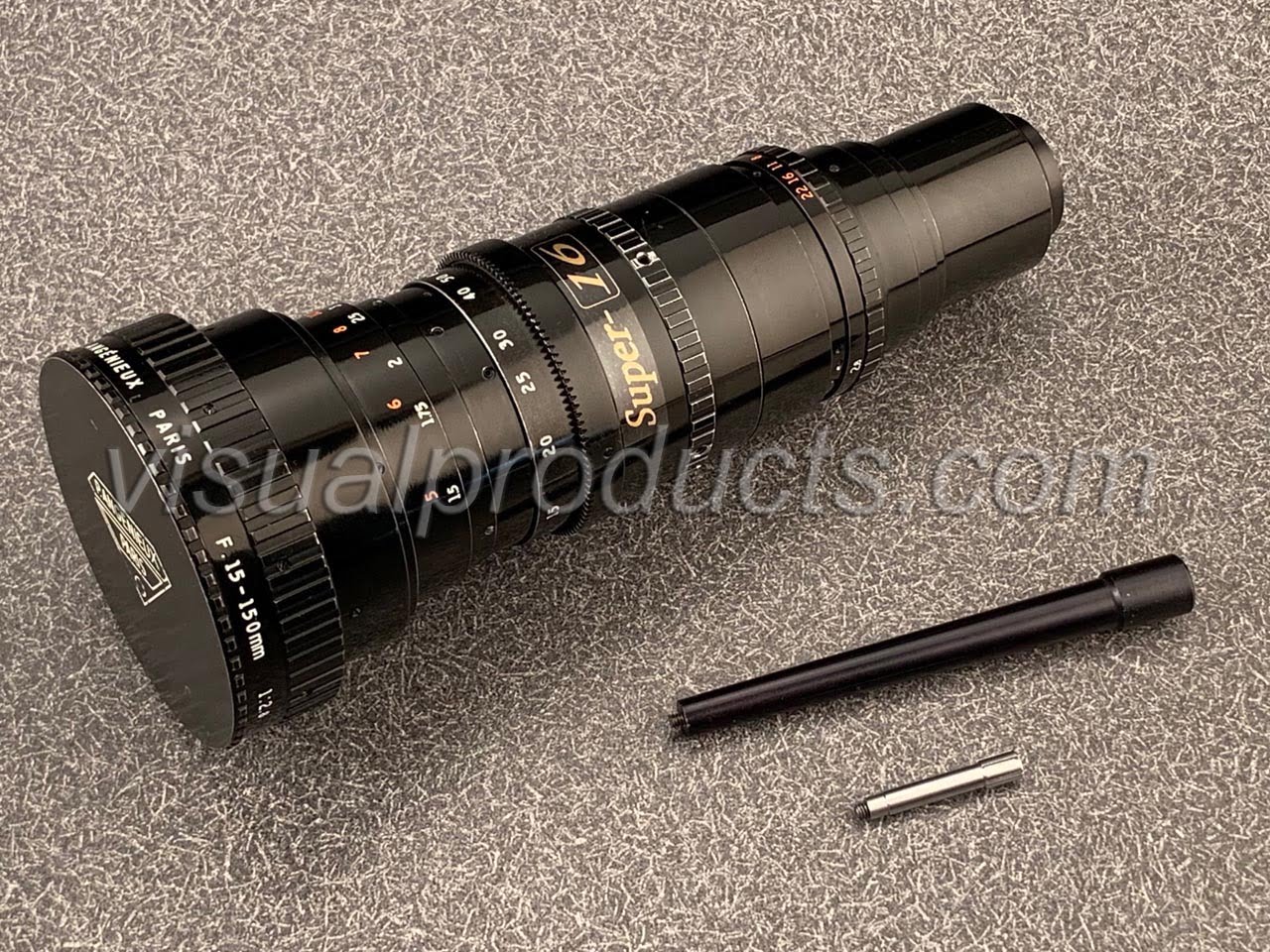


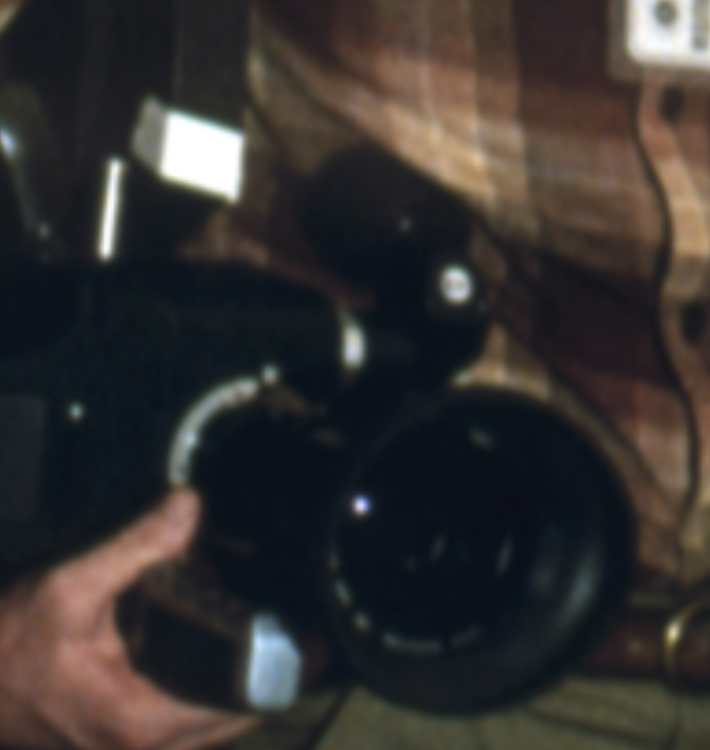
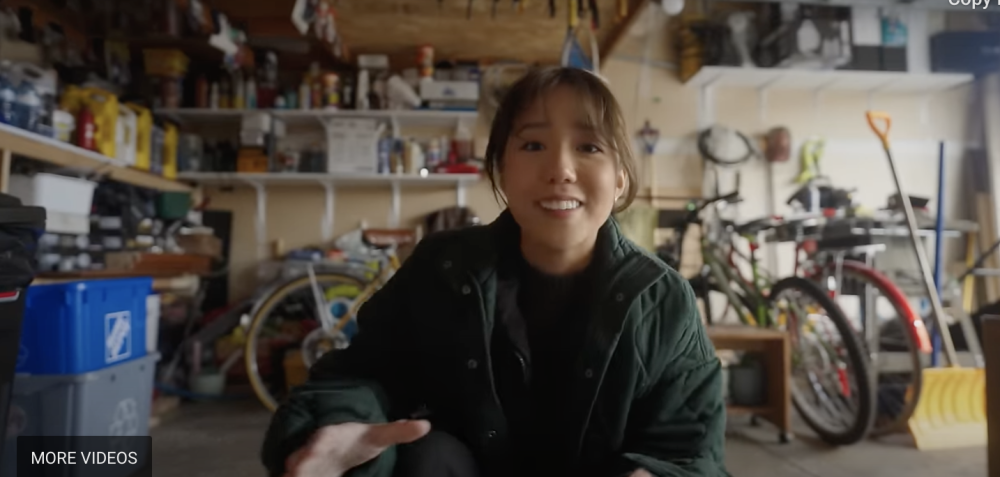
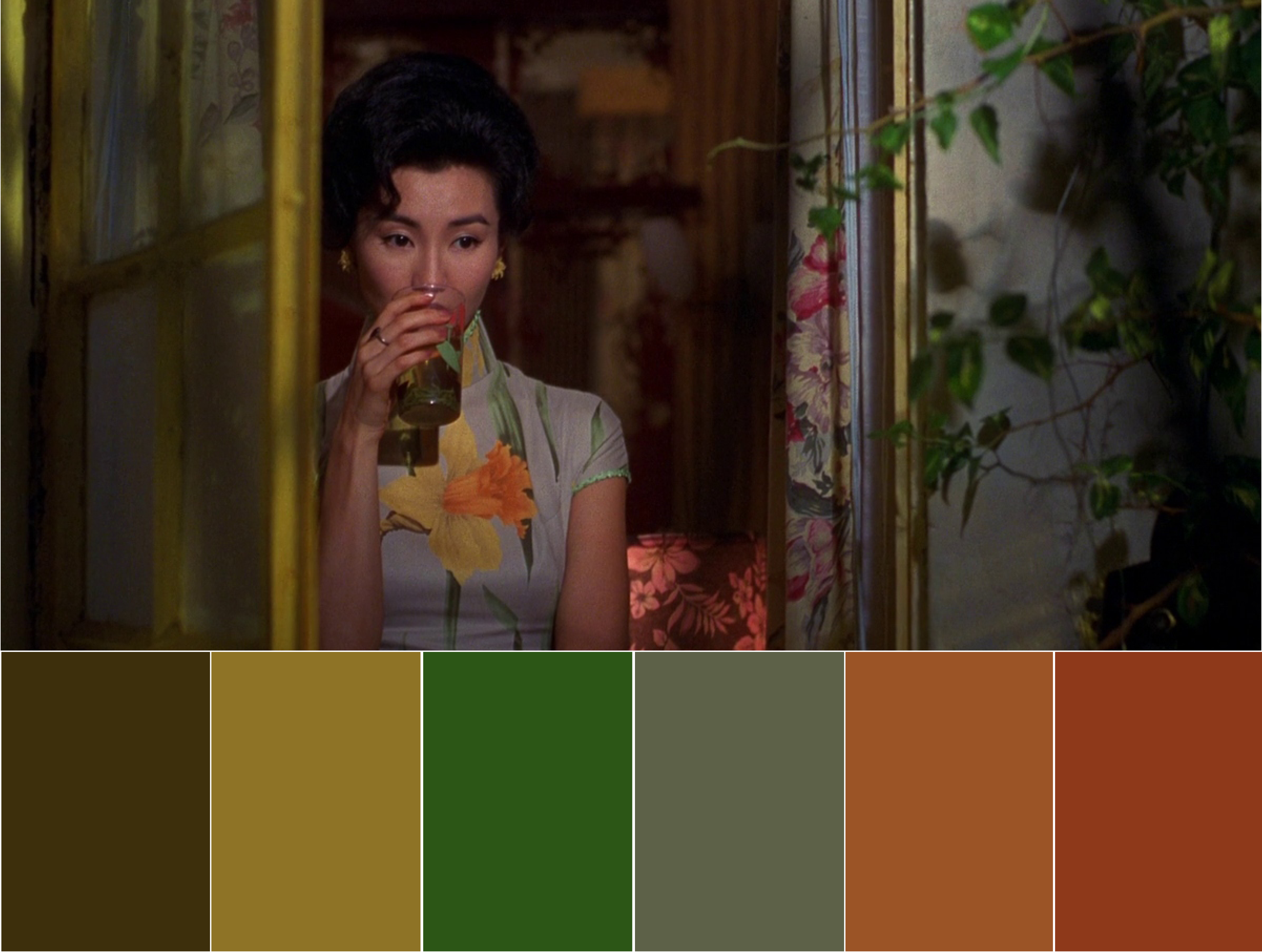



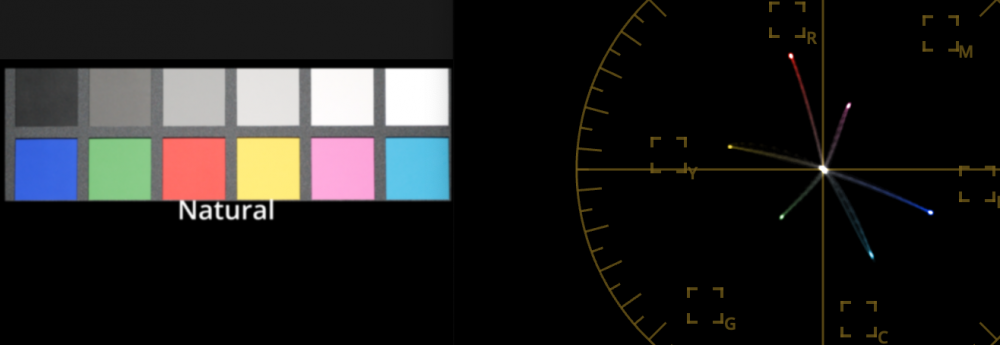
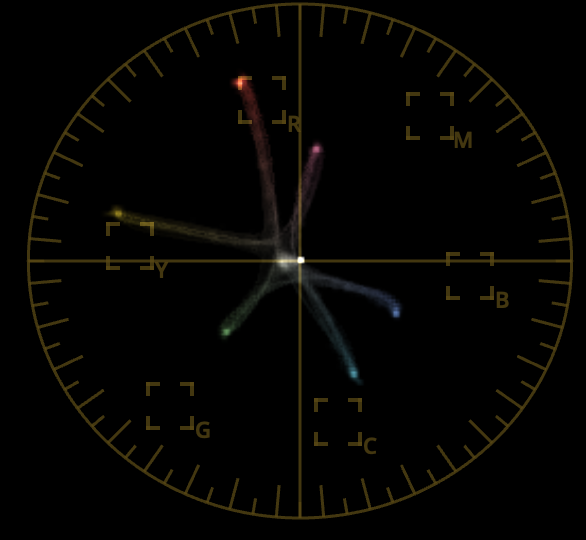
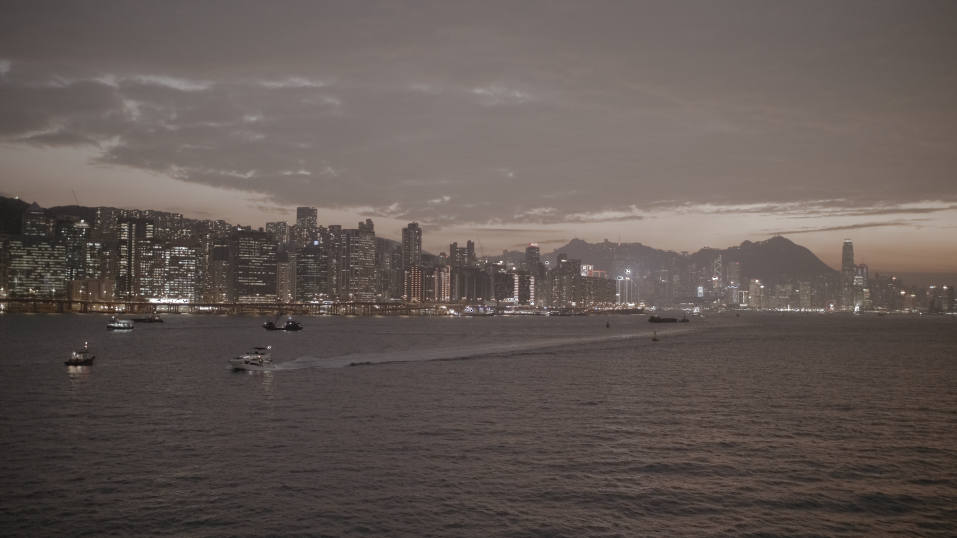
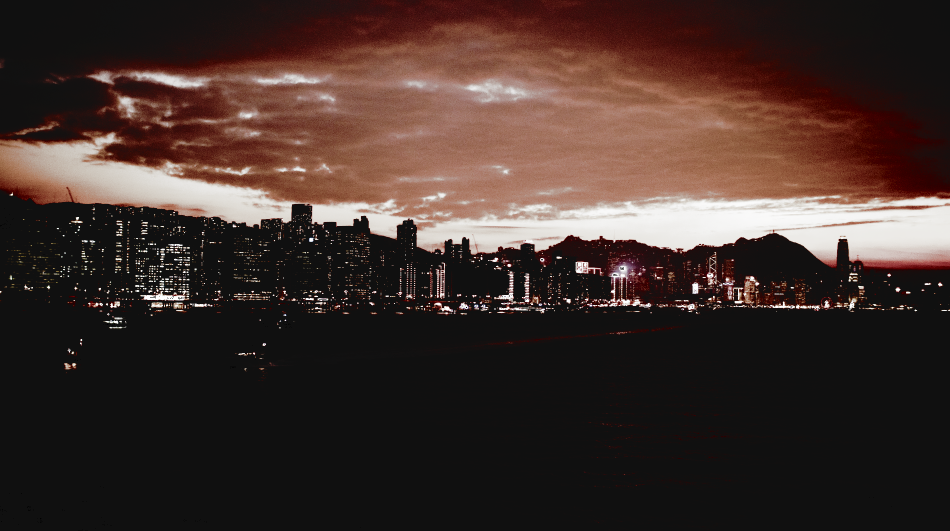
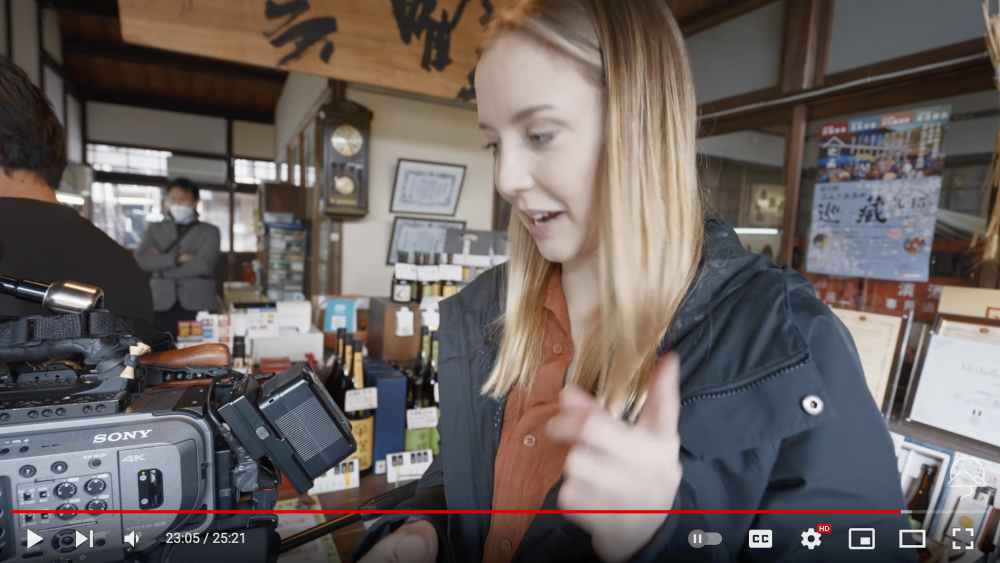
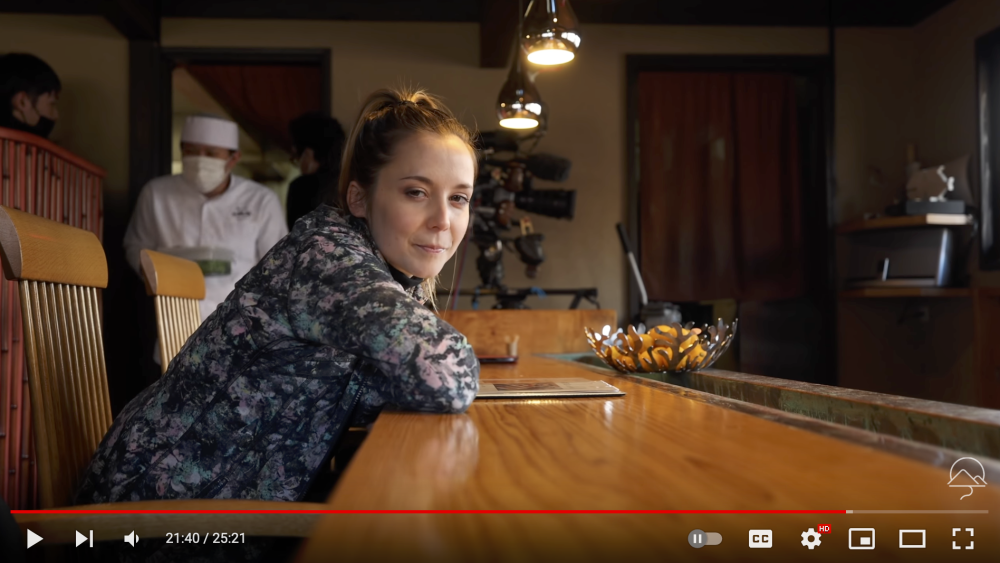
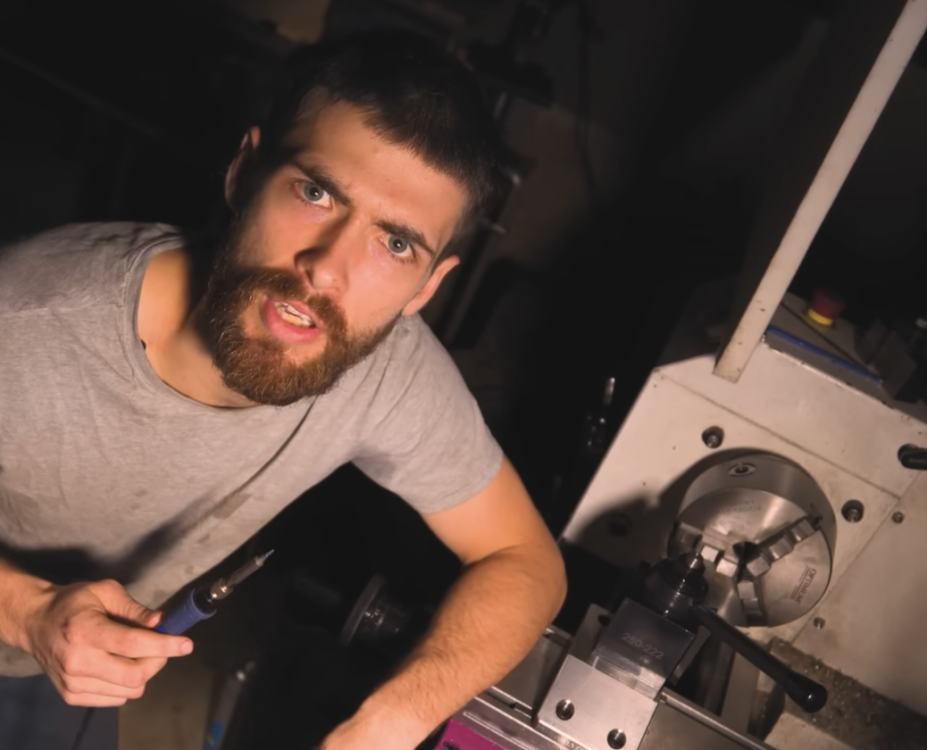
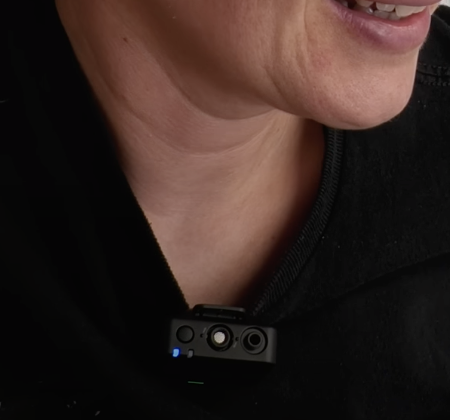



Sigma Announce RF Mount Lenses
In: Cameras
Posted
Maybe Canon are thinking that they'll keep their exclusivity on the super-sharp super-expensive lenses, but let the third-parties develop lower cost less technically perfect lenses?
It would make sense and make the system a lot more accessible and attract a lot of new customers that wouldn't want to spend top dollar on pristine lenses. Their success on the EF line and how ubiquitous it was must have been a critical factor in their earnings over the decades, so making RF a new default standard is very much in their interests.
You might be right about the split between FF and APS-C lenses though - that's still a strategy in a similar direction.